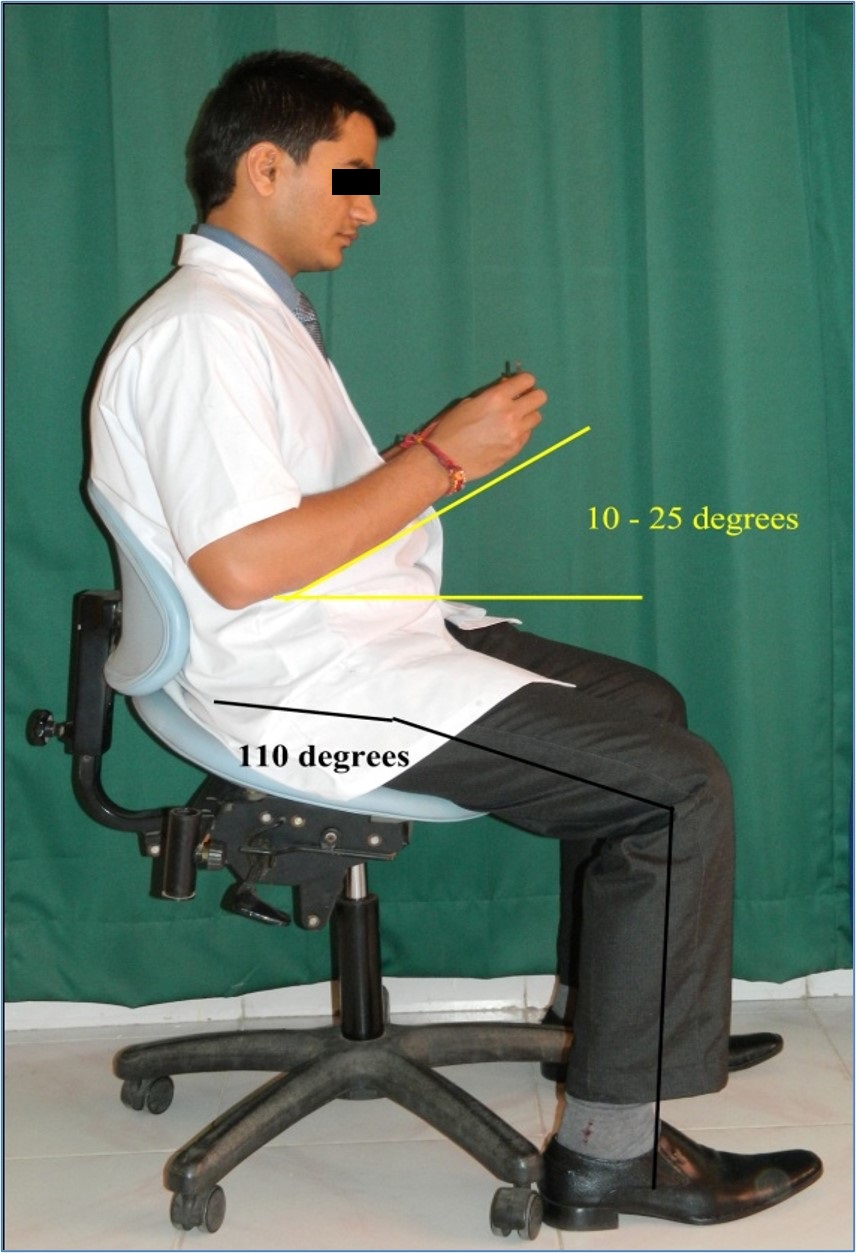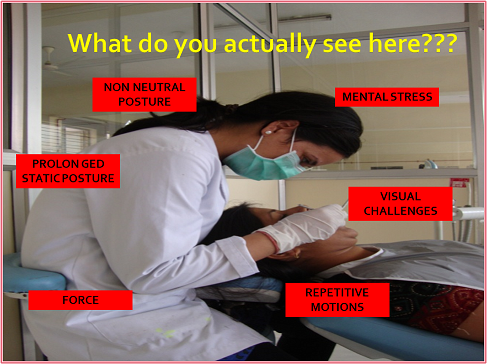




The prevalence of work-related Musculoskeletal disorders (MSDs) in Dentists is increasing day by day. Dental practitioners must work with instruments, equipment’s & working postures that does not fit the required way of working and/or individual characteristics. The ergonomic limitations play a distinct role in such musculoskeletal injuries.
Good working ergonomics is essential so that work capability, Efficiency and high clinical level of treatment can be maintained throughout the working life of dental professionals. The scope of ergonomics in dentistry is large: it ranges from chemistry between the dental team to lighting, noise and odor conditions and naturally to the used equipment and software. The treatment environment with the patient chair, dental unit, operating light, dynamic and hand instrumentation, cabinetry and peripheral equipment must be flexible. They need to adapt and guarantee good working postures, sufficient lighting and easy access to required instrumentation and materials for different working practices, clinical procedures and patient types.
-
Goals of Ergonomics
- Reducing the risks of musculoskeletal disorders (MSDs)
- Improving worker safety.
- Increasing worker comfort.
- Minimize worker fatigue.
- Improving the quality of work.
For prevention of musculoskeletal disorders following points need to be considered :
- Handling of instruments
- Handling of equipments
- Work postures
- Designing of dental workstation
- Chair side operatory exercises
- Four handed dentistry










